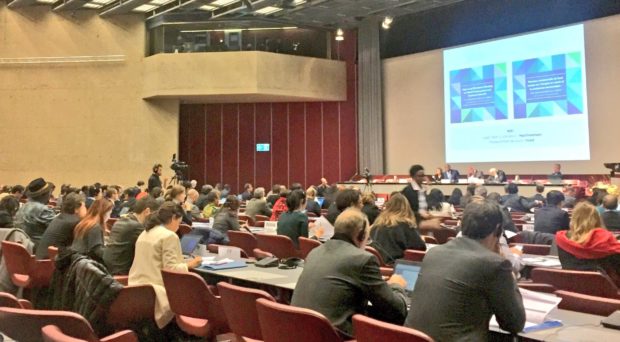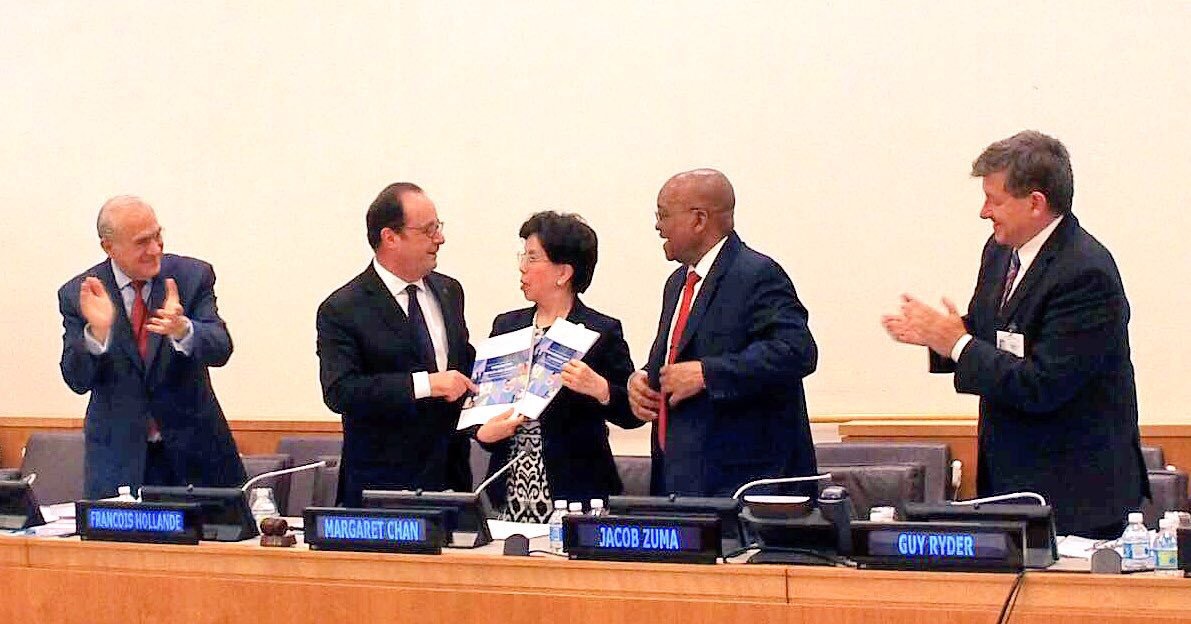
Decades of chronic underinvestment in the health workforce in many countries has been driven by the belief that health workers were a drag on the economy and a cost to be contained. This predominant mind set was challenged in September 2016 by the report of the High-Level Commission on Health Employment and Economic Growth[1], and with it – the recognition of the potential of investments into the health workforce to generate powerful socio-economic dividends across the 2030 Agenda.
On the 15th of December 2016, the United Nations General Assembly adopted a resolution urging Member States to develop intersectoral plans and make greater investments into education and job creation in the health and social sectors. On the 22nd of December in his final week as the United Nations Secretary-General, Ban Ki-moon stated that investments into the health workforce “will boost global security against outbreaks and other emergencies, and help countries achieve the 2030 Agenda for poverty elimination, good health and well-being, quality education, gender equality, and decent work and inclusive economic growth”.
Evidence brought together by the Expert Group of the Commission indicated that investments into health employment could produce significantly greater effects than investments into the financial sector. Richard Horton, Chair of the Expert Group and Editor-In-Chief of the Lancet was moved to proclaim this “a discovery of Nobelesque proportions”.
Addressing health and social needs whilst creating decent jobs and enabling inclusive economic growth, particularly for youth and women? This is an irresistible investment opportunity that should grab the attention of every head of state, Minister of Finance and Minister of Labour and propel the intersectoral commitment and action required to implement the Global Strategy on Human Resources for Health: Workforce 2030.
An investment case is one thing, securing commitments, investments and taking action is another. So, what next? The Commission ushered in a new level of intensified intersectoral collaboration on health and social workforce issues between the International Labour Organization (ILO), Organisation for Economic Cooperation and Development (OECD), and the World Health Organization (WHO) to propel implementation of the Global Strategy on Human Resources for Health forward.

To kick start this, the ILO, OECD and WHO organized the High-Level Ministerial Meeting on Health Employment and Economic Growth on 14th and 15th December 2016 in Geneva, Switzerland and put forward a five-year action plan. This action plan sets forth how the ILO, OECD and WHO, in collaboration with other key stakeholders, could support and facilitate country-driven implementation of the Commission’s recommendations.
On the 26th of January, the 140th WHO Executive Board decided to request the WHO Director-General to finalize and submit the five-year action plan to the 70th World Health Assembly in May 2017 for consideration. The Executive Board also requested the Director-General to work with Member States to adopt measures focusing on the key recommendations of the Commission, including the “development of intersectoral plans and investment in transformative education, promoting decent job creation in the health and social sectors and mutual benefit from the international mobility of health workers”.
There’s no time to lose and we must act immediately. How can you play a role and join the ILO, OECD and WHO in shaping new health workforce investments and actions?
First: take part in the ILO, OECD and WHO online public consultation on the five-year action plan by February 17th 2016 to review the proposed plan and tell us how we can better support Member States to implement the recommendations of the Commission.
Second: reflect on the recommendations of the Commission and explore how you can take these forward at national, regional and/or international levels.
Third: formalize your contributions into a statement of commitment and tell us about them through the online public consultation by February 17th 2016.
Health workers count and we count on you to work with us to make 2017 an unprecedented year for transformative investments and action. Let’s build on the momentum of 2016 and take advantage of the opportunities. Let’s start now.
- United Nations Secretary-General appointed the High-Level Commission on Health Employment and Economic Growth (the Commission) in March 2016. It was co-chaired by H.E. Mr. François Hollande, President of France, and H.E. Mr Jacob Zuma, President of South Africa. Dr Margaret Chan, Director-General of the World Health Organization (WHO) served as the co-vice chair along with Mr Angel Gurría, Secretary-General of the Organization for Economic Co-operation and Development (OECD) and Mr Guy Ryder, Director-General of the International Labour Organization (ILO). The Commission launched its report in September 2016 including ten recommendations and five immediate actions to stimulate the creation of health and social sector jobs as a means to advance inclusive economic growth.
One Comment